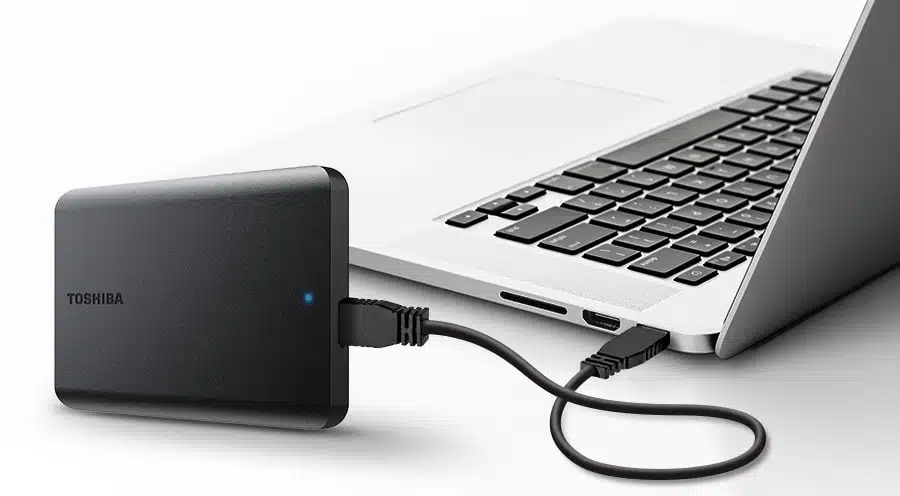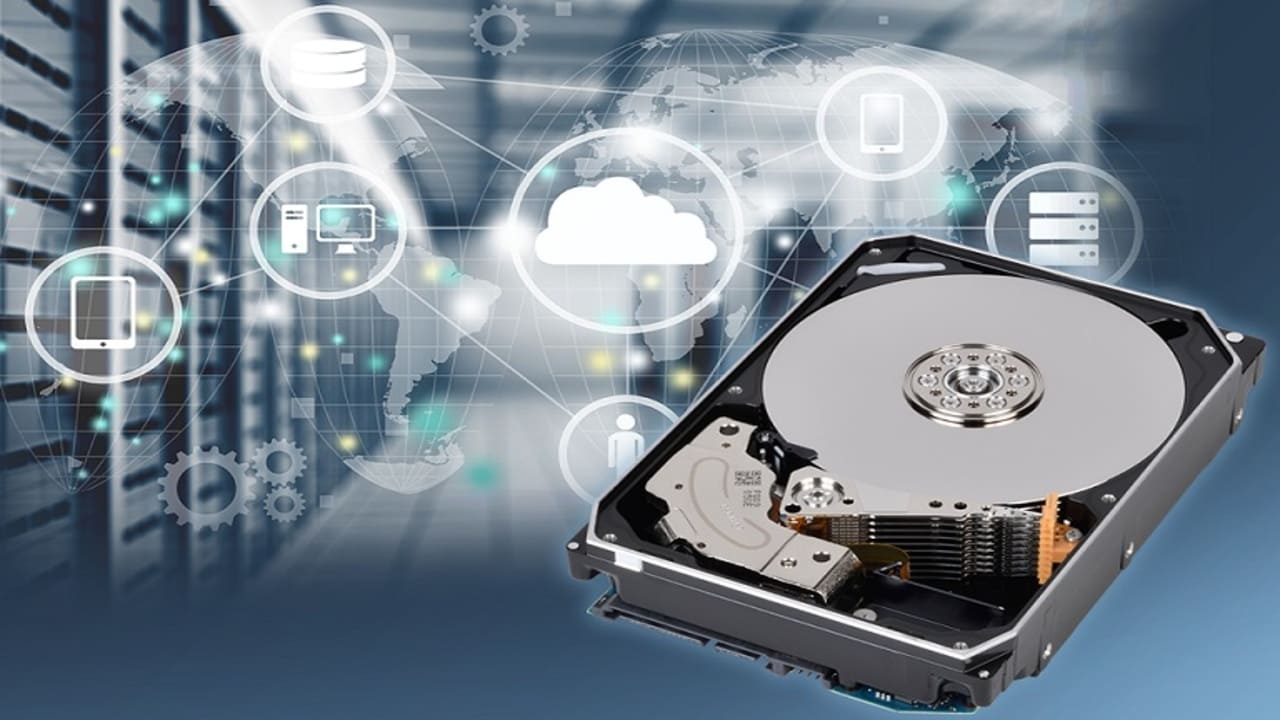About 40 years ago, i early PCs they were equipped with hard disk drives (HDD), large units that had a storage capacity of only 20MB. But the technology has rapidly shrunk and storage capacity has grown. Today HDDs can hold up to 20TBa million times more memory than the first PCs. Toshiba decided to make a historical excursus about the technological evolution of hard disk.
Toshiba traces the main stages of the technological evolution of hard drives.
The history of hard drives dates back to 50s. I drive of that time used the same basic technology as today’s models. These are spinning magnetic disks that move arms with read/write heads that magnetize or scan bits. Resembling small cabinets and weighing nearly a ton, the first HDDs were used in dedicated computers. Or in mainframe systems and have revolutionized data processing, making instant access to information possible.
Toshiba and the evolution of hard drives: the advent of the PC in the 80s
The success of hard drives began with the advent of PCs in the United States 80s. At the time the drives were 5.25 inches in diameter and held only a few megabytes. No more space was needed, because the applications didn’t have graphical user interfaces and there was no need to store scanned documents, digital videos or other data. In the following years, storage capacity increased to triple megabytes and interfaces were standardized.
Starting from late 1980s, the 3.5-inch format became widespreadwhich is still today the reference standard. However, manufacturers have also developed increasingly smaller formats, starting with 2.5-inch drives for notebooks. Today they are found only in external USB drives, while SSD drives are more used in laptops. Even smaller formats have been created, which have now completely disappeared from the market. For example, 1.8-inch HDDs existed for PCMCIA slots in notebooks at the turn of the millennium. In the 2000s, MP3 players also came with HDDs, a model with a 1.0-inch format and 1 Gigabyte storage capacity.
The introduction of flash memory
Since the flash memory they were expensive and memory cards had low capacity, they were also developed 1 inch discs. They could be inserted into the CompactFlash slot of digital cameras. At the beginning of the 21st century, some smartphones installed HDDs barely larger than one inch, in some cases even 0.85 inch with 4GB. The size has not been further reduced as flash memory has been preferred over HDD in mobile devices.
Thanks to Microwave-Assisted Magnetic Recording (MAMR), a new registration method has been developed in recent years. This uses microwaves to control and focus the magnetic flux at the writing head. This means that less energy is required to magnetize the bits, so the recording head can be smaller and write data more densely.

Toshiba’s new Flux-Controlled MAMR technology
In 2021 Toshiba has launched a hard drive with a new MAMR technologycall Flux-Controlled MAMR(FC-MAMR), which increased storage capacity and improved energy efficiency. Based on the success achieved, Toshiba ha subsequently presented the MG10 seriesAdvanced HDDs with 10-platter helium-filled designs that increase capacity, allowing you to store 20TB, while maintaining the 3.5-inch format.
In the next phase of development, Microwave-Assisted Switching MAMR (MAS-MAMR), microwaves will activate the coating of magnetic disks to further reduce power consumption and allow for further reduction in the size of the writing head.
However, this will require a new coating for the discs, which manufacturers are working on. According to experts, MAS-MAMR technology will increase the capacity of 3.5-inch models up to 50TB in the coming years so hard drives will continue to bear the burden of data storage in the information age.















Leave a Reply
View Comments